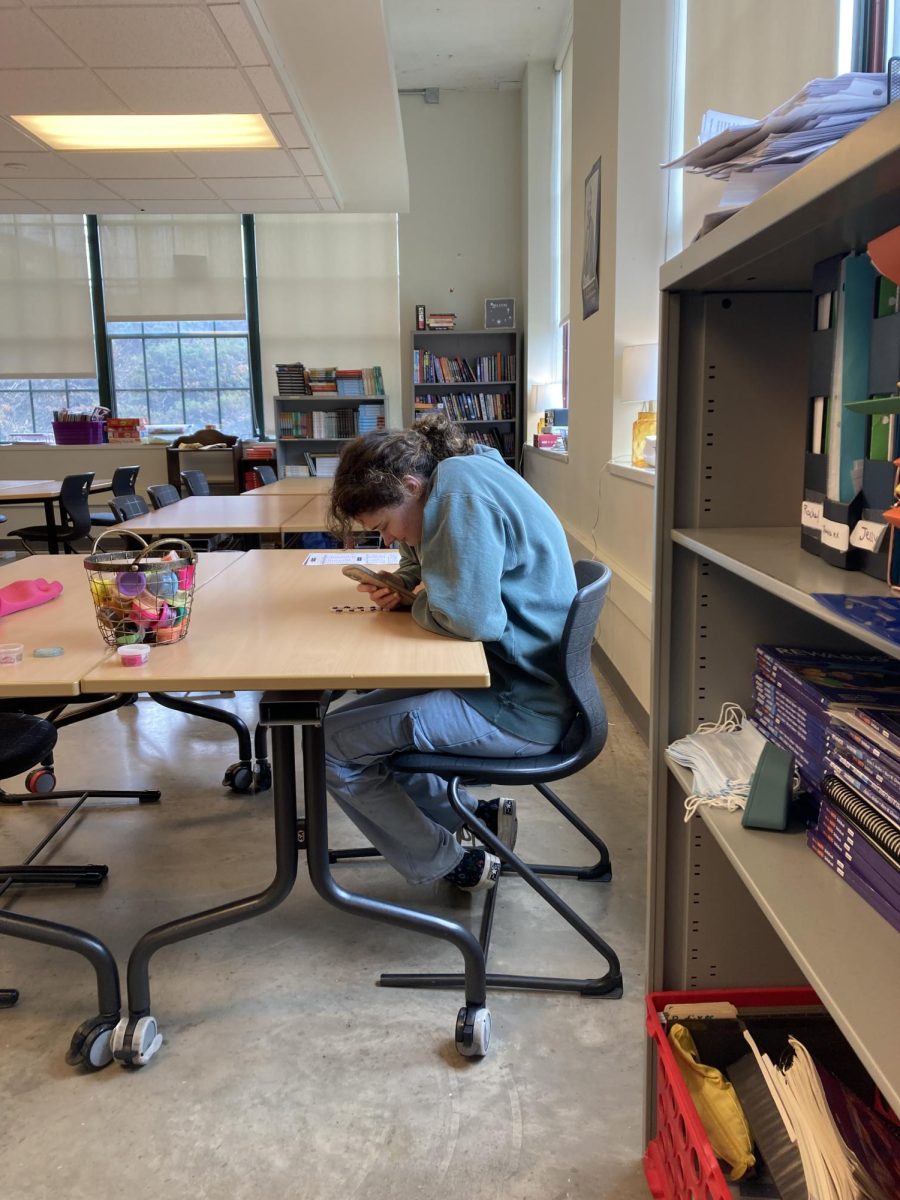Using solely project-based learning in a school can create long-term stress for students. While going to a school that does mostly project-based learning, I have observed that during times when I have many classes in the middle of projects, my stress levels have been higher in comparison to when I have classes doing daily work. During a group project in my sophomore year of high school, I was paired with three other classmates. We were to create a slide show about our book and present it. In the beginning, I naturally stepped forward as a leader and assigned everyone a piece of the project. While doing my work, I kept finding myself having to help and guide the rest of my group. These distractions made it hard for me to use my class time, and I began to resent my other group mates for being too needy. Throughout the week, I finished my own part of the project outside of class time. I felt hopeful that my peers would do their part of the project, but I mostly forgot about it. The day before our presentation, I checked our slides to make sure we were ready. Unfortunately, I found that two of my group mates had not finished their slides and had not added to them since the first day of work when I was coaching them. Not wanting to get a bad grade, I finished their slides for them. I knew that this sucked for me, but it was what had to be done, and I would deal with it later. On presentation day 1, one of my groupmates refused to present due to stage fright. While I do sympathize with stage fright, this is not fair to anyone else in the group. Not only was their grade on the line, but so was mine. In the end, points were docked off of my grade, and I didn’t even feel that I had learned anything due to the stress that was caused. One source that I read stated, “PBL might involve public speaking, working in teams or sharing projects in an exhibition, all of which can cause anxiety in students.” (Gobir) Many times, students who have a harder time doing their work in class get paired up with students that tend to be focused in class. Most of the time, this pairing creates an unequal workload and can cause stress and tension throughout a class. Another article that I read about project-based learning explained that a con was “demanding workloads for teachers and students” (Bogler). When there are demanding workloads for students and teachers, stress levels rise, making people’s work ethic lower and making learning a more difficult task. Some may claim that project-based learning creates an environment where students can understand and learn easier due to the slower pace. This claim is wrong because when there is a stressful environment, students will try to rush through projects to get them out of the way, causing them to not learn to their best ability. To make schooling more effective and less stressful, don’t use solely project-based learning and mix daily and long-term assignments.
Gobir, Nimah. “Project-Based Learning Can Make Students Anxious (and That’s Not Always a Bad Thing).” KQED, 16 Jan. 2023, www.kqed.org/mindshift/60603/project-based-learning-can-make-students-anxious-and-thats-not-always-a-bad-thing#:~:text=Because%20it%20explores%20real%2Dworld,can%20cause%20anxiety%20in%20students.
Bogler, Miriam. “Implementing Project-Based Learning: Challenges and Solutions.” Project Pals, 14 July 2023, www.projectpals.com/post/implementing-project-based-learning-challenges-and-solutions#:~:text=Other%20important%20challenges%20include%20demanding,professional%20development%20to%20train%20PBL.
Weimer, Maryellen. “Problem-Based Learning: Benefits and Risks.” Faculty Focus | Higher Ed Teaching & Learning, 12 Nov. 2009, www.facultyfocus.com/articles/effective-teaching-strategies/problem-based-learning-benefits-and-risks/#:~:text=PBL%20requires%20more%20time%20and,content%20knowledge%20may%20be%20learned.

































